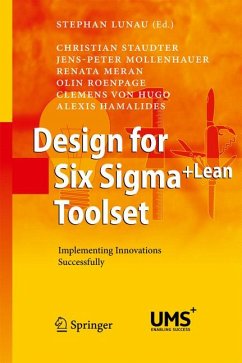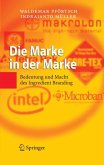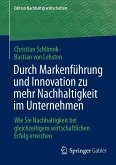The chronology of the listed tools corresponds to the procedure in a Design for Six Sigma+Lean development project with the stages Define, Measure, Analyze, Design, and Verify. Due to this unique structure by which tools can be found and applied quickly we created a book that facilitates project work in practical use enormously.
Dieser Download kann aus rechtlichen Gründen nur mit Rechnungsadresse in A, B, BG, CY, CZ, D, DK, EW, E, FIN, F, GR, HR, H, IRL, I, LT, L, LR, M, NL, PL, P, R, S, SLO, SK ausgeliefert werden.









